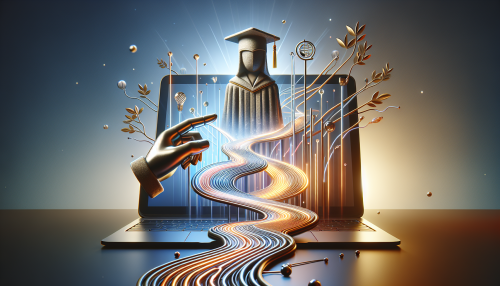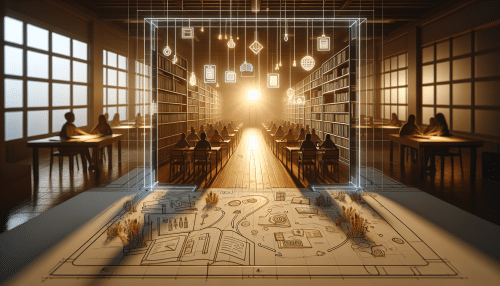Discover Surprising Ways You Learn Faster in Modern Education
Brian Taylor November 7, 2025
Explore how students and professionals are accelerating learning through adaptive technology, microlearning, and innovative approaches. This engaging guide reveals practical insights on modern education strategies, digital tools, and research-backed techniques to help you absorb knowledge more efficiently.
Microlearning: Small Bites Make a Big Impact
There is a growing interest in microlearning as a means of optimizing study time and knowledge retention. Microlearning delivers educational content in small, focused bursts that learners can easily digest and revisit as needed. It fits well into busy schedules, allowing learners to fit valuable lessons between daily responsibilities. Research indicates that these short-interval learning sessions improve recall while reducing cognitive overload, supporting accelerated and more sustainable educational outcomes. Adaptive online platforms further personalize the experience, making microlearning an increasingly popular tool in schools and the workplace (Source: https://www.edweek.org/teaching-learning/microlearning-offers-bite-sized-lessons-on-big-topics/2021/05).
Flexibility is a major advantage of this technique. With the rise of mobile devices, learners engage with bite-sized modules during commutes, lunch breaks, or other spare moments. This informal and flexible format addresses diverse learning preferences, motivating individuals to pursue lifelong learning on their terms. Teachers can also leverage microlearning to introduce complex topics gradually, ensuring students build confidence as they progress.
Microlearning is especially effective for reinforcing previously covered material. Instead of overwhelming students with large volumes of information, modular lessons let them revisit key concepts frequently. This continuous reinforcement leads to better retention and higher performance in assessments. Employers are increasingly encouraging staff to embrace microlearning for certifications and upskilling, recognizing the value of ongoing, accessible education in a fast-evolving world.
Technology Drives Personalized Learning Journeys
Technology is reshaping how educational content is delivered, moving away from one-size-fits-all approaches. Learning management systems and artificial intelligence (AI) platforms can analyze students’ strengths, weaknesses, and interests. With this data, adaptive learning systems suggest personalized lessons, practice tests, and support resources tailored to the individual. These innovations increase learner engagement, making study more efficient and enjoyable (Source: https://www.educause.edu/research-and-publications/research/top-10-it-issues/2022/personalized-learning).
This personalized approach aligns closely with various learning styles. Visual, auditory, and kinesthetic learners all benefit from adaptable resources that present topics in multiple formats. Some platforms provide instant feedback and recommendations, helping students focus on concepts that need the most improvement. As students gain confidence with specific skills, the platforms gradually introduce advanced material, promoting ongoing intellectual growth.
One exciting result of AI-driven education is inclusivity. Students with learning disabilities, language barriers, or special needs can access customized content and assistive technologies. Translators, speech-to-text, and visual supports empower learners who may have struggled in conventional classrooms. Through technology, personalized learning broadens educational access, closing achievement gaps and ensuring every learner’s potential is recognized.
Gamification Turns Studying Into Play
Gamification is transforming learning into an enjoyable adventure, engaging students through points, badges, and interactive challenges. Instead of relying solely on traditional lectures and textbooks, educators use game mechanics to make lessons stimulating. Students participate in quizzes, simulations, or digital escape rooms, earning rewards for completing tasks. This playful competition sparks motivation and increases consistency, especially among younger learners (Source: https://www.edutopia.org/article/5-ways-gamification-breathes-new-life-into-classrooms).
The benefits extend beyond engagement. Gamified learning environments practice critical thinking, problem-solving, and collaboration. Many platforms encourage students to work together on projects or compete towards shared goals, developing communication and social skills in the process. Game-style challenges present ‘failures’ as opportunities to retry and improve. This mindset encourages resilience and reduces anxiety about making mistakes. Teachers notice increased participation and higher test scores when lessons feel like games.
Gamification isn’t restricted to young people. Adult learners and professionals also thrive in these environments, especially when training for new roles or mastering complex topics. Certification platforms, language apps, and even workplace compliance courses are applying gamification principles to support lifelong learning. This democratization of enjoyable education is making it easier than ever to stay curious and engaged, no matter one’s age or background.
Collaborative Learning Connects Minds Globally
The days of solitary study are shifting toward collaboration, with group projects and peer-to-peer discussion becoming mainstream. Digital tools including video conferencing, online forums, and shared workspaces allow students and teachers worldwide to connect. These collaborations foster group problem-solving, creativity, and exposure to new perspectives. Learners report improved comprehension when they explain concepts to peers, reinforcing their own understanding (Source: https://www.educationworld.com/a_tech/tech/tech212.shtml).
Collaborative learning also supports equity and inclusion. Group assignments break down barriers by encouraging input from students with varying strengths and backgrounds. Students practice communication, leadership, and negotiation skills while advancing together. Teachers are reimagining assessments, focusing on real-world projects and presentations that evaluate teamwork alongside knowledge mastery. This mirrors how professionals solve problems in the workplace, preparing students for life beyond school.
Increasingly, educational institutions are forming international partnerships, allowing learners to engage in global classrooms. Cross-cultural projects expose students to diverse ideas and foster empathy, cultural literacy, and global awareness. With remote and hybrid options more available than ever, collaborative learning prepares everyone to contribute meaningfully on a worldwide stage.
Self-Directed Learning Boosts Independence and Motivation
Self-directed learning puts the power back in the hands of the learner. Rather than following rigid curricula, individuals set goals, choose study resources, and progress at their own pace. This autonomy nurtures motivation and a sense of ownership over personal growth, which are proven ingredients for long-term success. Learners gain problem-solving experience by evaluating resources, organizing time, and reflecting on their achievements (Source: https://www.learning-theories.com/self-directed-learning.html).
Many digital education platforms support self-directed learning. Massive open online courses (MOOCs), podcasts, e-books, and interactive modules allow learners to pursue interests in depth. They can revisit challenging material as often as needed or skip ahead to advanced topics. This freedom attracts people at all stages of life, from ambitious students to professionals seeking new skills or personal enrichment.
Self-directed learning is fostered by critical thinking and curiosity. As learners explore unfamiliar topics, they develop agility in addressing complex questions and learning new tools. In a rapidly changing world, these independent skills are vital for adapting to new careers, technologies, and ideas. Schools and employers now encourage and reward initiative, seeing it as a sign of readiness for the challenges ahead.
Lifelong Learning for Career and Personal Growth
Education is no longer limited to early life or formal settings. Lifelong learning has emerged as an essential part of thriving in the modern world. Continuous skill development protects employability by anticipating workplace changes, from automation to digital transformation. Many industries now recognize and encourage nontraditional credentials gained through online learning, certificates, or project-based experiences (Source: https://www.brookings.edu/articles/the-skills-needed-for-the-future-of-work-are-not-technical-theyre-advanced-cognitive-skills/).
Personal growth also motivates individuals to pursue new learning opportunities. Hobbies, languages, and volunteer work all support cognitive health, emotional well-being, and a sense of connection. Educational institutions offer workshops, community classes, and open-access resources to promote enrichment at any age. The desire to learn isn’t tied to necessity—many discover that learning for its own sake is deeply rewarding.
For those uncertain about where to start, career counselors and education advisors recommend beginning with small, manageable goals and gradually expanding. Free and affordable resources abound, lowering barriers to entry. Learners are encouraged to share their progress and experiences with peers online, reinforcing accountability and community. Lifelong learning underscores that education is a lifelong journey, rich with opportunities and discovery every step of the way.
References
1. EdWeek. (2021). Microlearning Offers Bite-Sized Lessons on Big Topics. Retrieved from https://www.edweek.org/teaching-learning/microlearning-offers-bite-sized-lessons-on-big-topics/2021/05
2. EDUCAUSE. (2022). Personalized Learning. Retrieved from https://www.educause.edu/research-and-publications/research/top-10-it-issues/2022/personalized-learning
3. Edutopia. (n.d.). 5 Ways Gamification Breathes New Life Into Classrooms. Retrieved from https://www.edutopia.org/article/5-ways-gamification-breathes-new-life-into-classrooms
4. Education World. (n.d.). Peer Learning: Collaborating for Improvement. Retrieved from https://www.educationworld.com/a_tech/tech/tech212.shtml
5. Learning Theories. (n.d.). Self-Directed Learning. Retrieved from https://www.learning-theories.com/self-directed-learning.html
6. Brookings Institution. (n.d.). The Skills Needed for the Future of Work Are Not Technical—They’re Advanced Cognitive Skills. Retrieved from https://www.brookings.edu/articles/the-skills-needed-for-the-future-of-work-are-not-technical-theyre-advanced-cognitive-skills/





